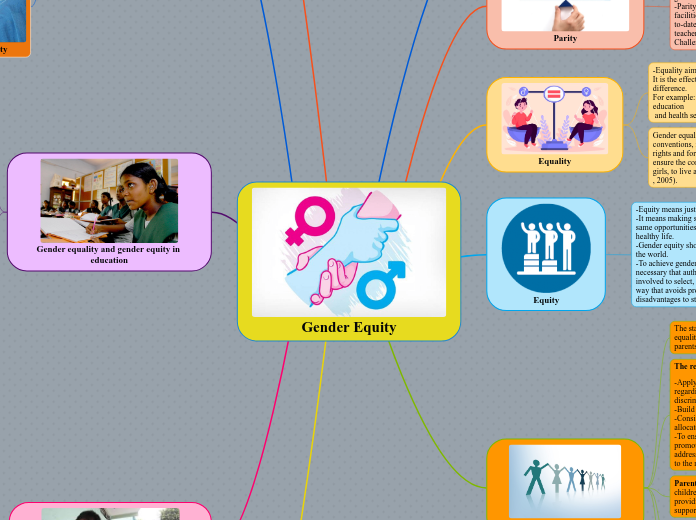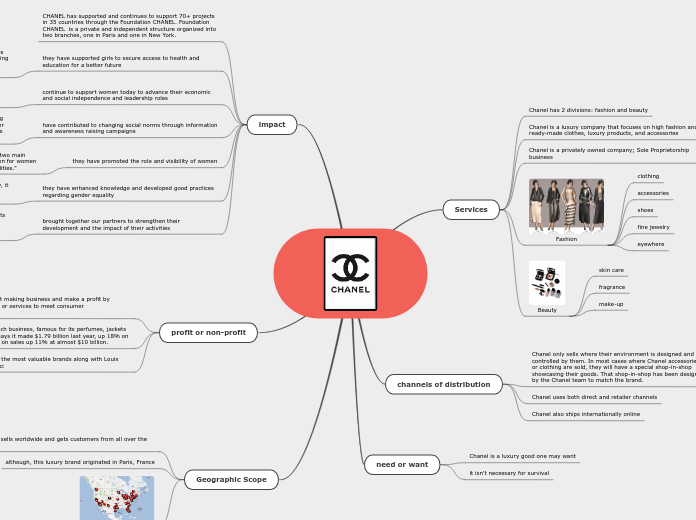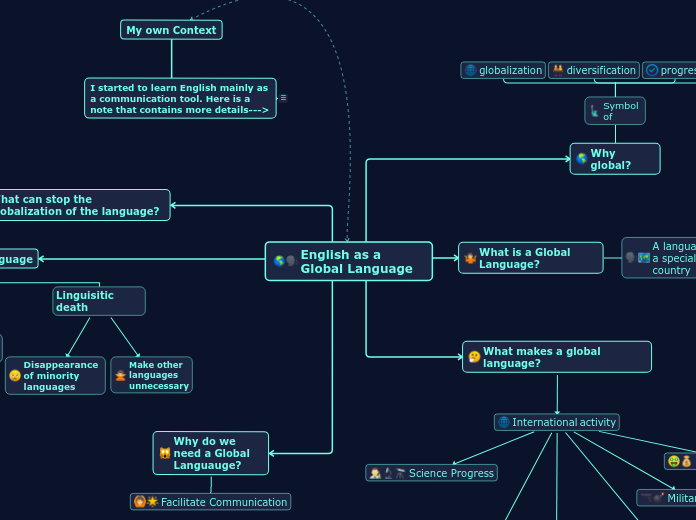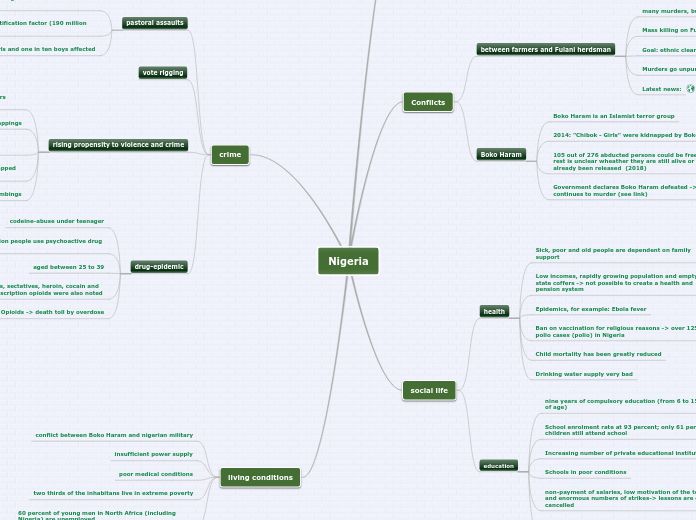Biological development and health
The biology of adolescent development
Brain development
-In terms of brain development, it is necessary to emphasize that the frontal lobe of adolescents responsible for judgment, impulse, control and planning is still maturing. That is why we can see an increase in risk behaviors and elevated emotions during this period (Psychology).
Puberty
-Sexual maturation or puberty begins at different ages depending on genetic and environmental factors. Nutrition, general health, and living conditions have affected times of sexual maturity. For example, the average age at which girls start menstruating has decreased by about 3 years over the past 100 years. However, sexual maturation follows the same order.
-During this period there is an enlargement of the breasts in girls, growth of hairs on the face, hands and legs; and in the pubic region more in boys than in girls, a development of the sexual organs in men and women and various hormonal changes (Roundy, 2019).
Adolescence is the transition period between childhood and adulthood.
It is the name of the period of 10 to 20 years in which boys and girls reach adult height and weight and experience sexual maturation.
The changes that occur during this period are physical, intellectual, personality and social development. The timing and speed with which these changes occur vary due to genetics and environment.
The biology of child development and learning
-Research in developmental biology and neuroscience offers four general insights into the role of the developing brain and other biological systems in early childhood development.
-These insights together help to understand how children's formative experiences take place in their families, communities, healthcare settings, child care, preschools and schools; and help educators understand the complexity and importance of their role.
Four general insights into the role of the developing brain
Individual differences in sensitivity to surroundings
Individual differences can affect the environment of susceptible children.
The impact of stress on development
Early psychological and social adversities that begin even during fetal development can have significant short- and long-term effects on brain development and the way the brain and body handle stress.
The immune and endocrine systems may be affected by stress.
The interaction of genes and the environment
Genes, environmental factors, and experiences influence a child's development. Neither the environment nor biology alone are destiny.
Rapid brain development during early childhood
The brain develops through a dynamic interaction between underlying biological processes and exposures and experiences in the environment.
How health affects the school performance of a child and adolescent
The relationship between school performance and various health problems
Diseases
Diseases such as diabetes, epilepsy, cancer, hemophilia, congenital heart conditions, and HIV can affect children's school attendance and performance (UC San Diego Health, 2006).
Asthma
Children with this disease are at risk of poor academic performance due to acute exacerbations of the disease, increased absenteeism secondary to symptoms, and effects of asthma medication.
The obesity
It is often associated with an increase in type 2 diabetes, hypertension, sleep apnea, asthma, fat-releasing disease, cancer, psychological problems, and a lower quality of life among children.
Importance of breakfast
Some students do not eat enough food and this can affect the child's ability to learn.
A healthy breakfast is an effective means of improving academic performance and cognitive functioning.
Children with anemia can have academic disadvantages.
Physical activity
It helps children develop social skills, improve mental health, and is associated with fewer risky behaviors.
It affects the brain and improves students' cognition, mood, attention, and academic performance (UC San Diego Health, 2006).
Poor sleep
In fact, getting enough sleep is a key part of a healthy lifestyle and has benefits: it improves memory, stimulates creativity, sharpens attention, and reduces stress levels.
On the other hand, children who have trouble sleeping are more likely to have attention and learning problems. Also, it can lead to ADHD-like symptoms, or children are more likely to be hyperactive, inattentive, and impulsive. Bad sleep = bad grades.
It includes problems such as poor sleep patterns, resistance to going to bed and frequent awakenings during the night, snoring, sleep apnea, and daytime sleepiness.
Children need at least nine hours of restful sleep each night.
Brain development before birth
The development of the human brain takes place in the third week of gestation and extends at least until the end of adolescence.
-There are two processes that contribute to brain development:
* Molecular events (gene expression)
* The impact of the environment.
These processes interact to support the rest of the series of events that delineate brain development (Roundy, 2019).
Stages of growth and development in infants and children
Child development covers the following skills:
-Cognition: the ability to learn and solve problems.
-Social interaction and emotional regulation: interact with others and master self-control
-Speech and language: understanding and use of language, reading and communication.
-Physical skills: fine motor skills (fingers) and gross motor skills (whole body)
-Sensory awareness: the record of sensory information for use (Kid sense)
-Childhood is the first stage of children's development and covers the child during prenatal care and up to one year of age.
This first year is a period of rapid development of motor, language, social, sensory and thinking skills.
-By the end of the first year, children can generally crawl, sit without support, babble, and copy simple sounds and actions (Roundy, 2019).
Child development refers to the sequence of physical, language, thinking, and emotional changes that occur in a child from birth to early adulthood.
Biological development
The infant stage is also a time of crucial growth and development, and important milestones continue as the person grows, even into adulthood.
Growth refers to the increase in size, length, height, and weight. It is one of the parts of the development process.
Development involves general changes in the individual (quality or character rather than quantitative aspects) (Krishna Kanta Handiqui State Open University).
Children go through different periods of development as they grow.
Biological development includes stages that begin when the baby is still in the womb. In fact, several essential prenatal stages take place during the formation of the baby's body.
Gender Equity
The process of building gender equity
One of the ways to contribute is to develop a curriculum that is intended to provide opportunities for children. It would include:
-Study perspectives on the construction of gender in different historical, cultural and socioeconomic contexts.
-Examine current gender-based relationships that limit options for different groups.
-Explore the role of language and change it for a positive construction of gender.
-Critically examine the influence of global culture on gender
-Understand the influence of the construction of gender from early childhood to the rest of life.
-Develop skills, behaviors, attitudes and understandings to build equal and respectful relationships (Gender equity: a framework for Australian schools)
Finally, to achieve gender equity in education, authorities must:
-Train curriculum developers, textbook writers, district administrators, school authorities, and teachers in gender awareness before developing the new curriculum.
-To train teachers in inclusive teaching practices and in the equitable treatment of students.
-Increase the facilities of schools.
-Train teachers, staff, and students to prevent violence and enforce teacher codes of conduct.
-Finish the academic career based on gender stereotypes.
Causes of gender discrimination in education
Sociocultural factors
-The patriarchal society seems to influence some decisions in some cultures. These decisions on educational issues favor boys more than girls.
-The chauvinistic mentality causes some people to think that men are suitable for certain types of studies (mathematics, science) or for careers that involve a high level of decision-making and authority. Women are considered weak not only physically but also mentally.
-In some households, gender stereotypes, gender discrimination and negative attitudes towards girls' education persist.
-Some families do not pay attention to girls. They do not see them better compared to children.
Education is interrupted by unwanted pregnancies, as many girls do not want to go to school when their pregnancy becomes visible.
Violence (physical, sexual or psychological harm) is a barrier to accessing education. The educational level of parents is related to the educational level of their children.
-Some religions affirm that women are less valuable than children.
-Some women lack sufficient empowerment in some parts of the world and in Ecuador. Any problem, consequence of gender inequality or gender inequality, such as: violation of rights, can be addressed by empowering and educating women (Rukhshanda, Muneera & Waheed, 2017).
Socioeconomic factors
Poverty is a factor that prevents children and especially girls from accessing education
Gender equality and gender equity in education
-Gender equity refers to men and women who should be treated equally, treated according to their gender needs.
-It means that there must be a provision of equity and justice in the distribution of benefits and responsibilities between men and women.
-In terms of education, gender equity means that gender is not an obstacle to reaching educational potential.
Gender equity in education means that boys and girls have the same opportunities in the future in terms of economic, social, cultural and political issues. In other words, the girls will obtain benefits according to their needs (Sahin, 2014)
Achieving gender equity requires paying attention to the following important issues:
-Traditional gender roles that cause gender inequality should be eliminated
-Both boys and girls must have enrollment policies and educational practices through the same teaching methods, in the same curriculum and content.
-Girls should be encouraged to receive education through development programs, businesses and scholarships.
-The Ministry of Education must incorporate gender equality in its programs and textbooks, radio and television programs and audiovisual documents.
-Textbooks must be suitable for both sexes, purified of sexual discrimination.
-The workshops on “gender” should be part of the school curriculum. Both boys and girls must attend (Sahin, 2014).
Gender equality.- En education means that members of both sexes should legally enjoy the same rights, resources, opportunities and protection.
In terms of education, boys and girls, men and women must have access to high-quality education.
Equality in the learning process.- occurs when girls and boys receive the same treatment and attention and have the same opportunities to take advantage of the learning process.
This means that although their learning styles may be different, both boys and girls are exposed to the same curriculum, teaching methods, materials, and access to technology.
Furthermore, this means that boys and girls have the freedom to learn, explore and develop skills in the extracurricular activities promoted by the school.
Equality and equity in education
Educational equity
The farthest behind students (low-income, indigenous, Afro-Ecuadorian, rural, or urban slums) require more resources to catch up, succeed, and eventually close the achievement gap.
Ensure that students from low-income, indigenous, Afro-Ecuadorian, rural areas or marginalized neighborhoods have access to exceptional, well-prepared and accessible teachers, up-to-date materials, and access to technology.
Ensure that students from low-income, indigenous, Afro-Ecuadorian, rural areas, or marginalized neighborhoods have schools with funding to provide them with the type of high-quality education they need to be successful.
"More for those who need it" (Mann, 2014)
Educational equality
-Ensuring that all students have equal access to resources is the ideal goal because all students must have the necessary resources for a high-quality education.
Ensuring that all students have equal access to resources is the ideal goal because all students must have the necessary resources for a high-quality education.
"Level the playing field"
-According to UNESCO, education is a “fundamental and essential human right for the exercise of all other human rights. It promotes individual freedom and empowerment and produces significant development benefits ”.
-It means that, in terms of equity in learning or equity in education, it is a measure of equity and opportunities in achievement.
-Educational equity is based on the premise that the level of education of an individual is directly related to the quality of future life. That is why it is so important.
Gender inequality
We live in a world where education shows great gender inequalities.
According to UNESCO (United Nations Educational, Scientific and Cultural Organization), almost three-quarters of a billion girls do not complete primary education for two reasons: the quality of the school is poor and the girls do not have the same opportunities as children (Unter, Challender & Rajapalan, 2005).
Actors to achieve gender equality
Students are responsible for ensuring their inclusion and for demanding that the right to education is equal for boys and girls.
Community members (all of us) are responsible for monitoring the government, schools, parents, and students to challenge stereotypes and ensure that discriminatory practices are not tolerated (Manos, 2018).
Schools are responsible for inclusive teaching practices and fair disciplinary rules, as well as promoting discussions on gender issues, providing critical thinking to use curricula and textbooks.
Parents are responsible for ensuring that their children have the opportunity to go to school and for providing them with loving, encouraging and material support alike.
The responsibilities of the Government are:
-Apply what the Ecuadorian Constitution says regarding the right to education and non-discrimination of girls.
-Build inclusive and equitable educational systems
-Consider the gender implications of how they allocate resources.
-To ensure that curricula and textbooks do not promote gender bias, teacher training programs address gender issues and school facilities are tailored to the needs of girls.
The stakeholders responsible for guaranteeing gender equality and equity in education are: Government, parents, schools, teachers and students.
Equity
-Equity means justice without prejudice.
-It means making sure that people have access to the same opportunities to have and enjoy a full and healthy life.
-Gender equity should be the aspiration of everyone in the world. -To achieve gender equity in schools, it is absolutely necessary that authorities, teachers and parents get involved to select, organize and share knowledge in a way that avoids problems that may cause disadvantages to students because they are women.
Equality
Gender equality is the aspiration of many international conventions, national constitutions to respect human rights and for demanding ethical reasons in order to ensure the conditions for men and women, boys and girls, to live a full life (Unter, Challender & Rajapalan , 2005).
-Equality aims to ensure that everyone gets the same. It is the effect of treating each person without difference.
For example: the Ecuadorian government subsidies education
and health services are for rich and poor alike.
Parity
-Gender parity refers to the same proportion of girls and boys who enter and complete school.
-Getting gender parity as a way to respect the rights of girls is not enough.
-Parity must be completed with the quality of facilities, the number of textbooks, sufficient and up-to-date teaching and learning materials, well-prepared teachers and the number of girls graduating (Unter, Challender and Rajapalan, 2005) .
Definition of gender
Gender refers to those attitudes and behaviors accepted by society as ways of being a woman or a man. These behaviors and attitudes are a social construction that depends on culture, socioeconomic class and time being reinforced over time by social practice (Guinea, 2009).









